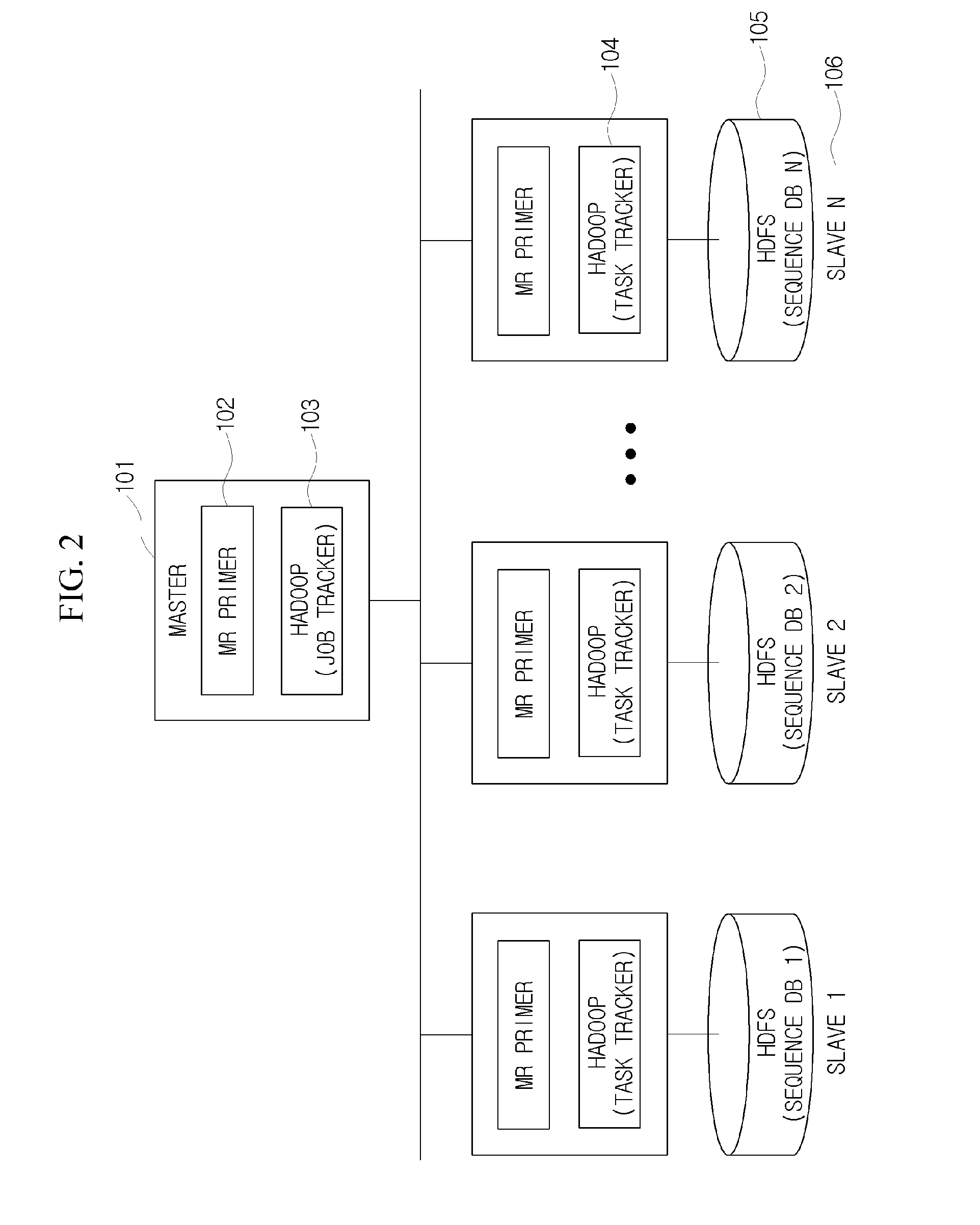Method for thoroughly designing valid and ranked primers for genome-scale DNA sequence database
a genome-scale dna sequence and database technology, applied in the field of primer design, can solve the problems of large amount of time required, inability to test the design constraints of primers and verify specificity, and inability to obtain inaccurate results
- Summary
- Abstract
- Description
- Claims
- Application Information
AI Technical Summary
Benefits of technology
Problems solved by technology
Method used
Image
Examples
Embodiment Construction
[0048]Exemplary embodiments of the present invention will be described in detail below with reference to the accompanying drawings. While the present invention is shown and described in connection with exemplary embodiments thereof, it will be apparent to those skilled in the art that various modifications can be made without departing from the scope of the invention.
[0049]Unless specifically stated otherwise, all the technical and scientific terms used in this specification have the same meanings as what are generally understood by a person skilled in the related art to which the present invention belongs. In general, the nomenclatures used in this specification and the experimental methods described below are widely known and generally used in the related art.
[0050]Hereinafter, the method for designing all coverage of valid primers which satisfies the conditions for specificity to large-scale DNA sequences in a large-scale DNA sequence database will be described in detail.
[0051]FI...
PUM
 Login to View More
Login to View More Abstract
Description
Claims
Application Information
 Login to View More
Login to View More - R&D
- Intellectual Property
- Life Sciences
- Materials
- Tech Scout
- Unparalleled Data Quality
- Higher Quality Content
- 60% Fewer Hallucinations
Browse by: Latest US Patents, China's latest patents, Technical Efficacy Thesaurus, Application Domain, Technology Topic, Popular Technical Reports.
© 2025 PatSnap. All rights reserved.Legal|Privacy policy|Modern Slavery Act Transparency Statement|Sitemap|About US| Contact US: help@patsnap.com



